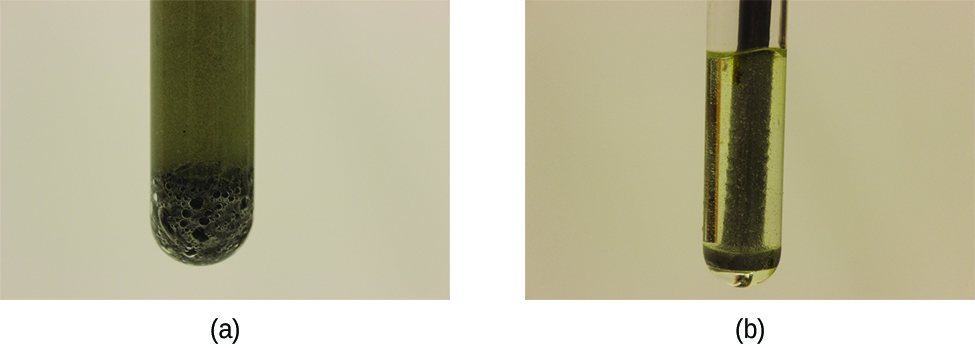Chemical reactions with two (or more) reactants need close contact between the substances. In most cases, molecules must actually collide directly with each other in order to transfer electrons or atoms in the reaction (look ahead to the Collision Theory section). When reactants are in different physical states or phases (solid, liquid, gaseous, dissolved), the reaction can only take place at the interface between the phases, where the two reactants meet.
Consider the reaction between a solid phase and either a liquid or gaseous phase (a heterogeneous reaction). The solid material only contacts the other material at the surfaces of its particles. Large particles have less surface area (for the same mass) than smaller particles do. The rate of reaction for small particles will be faster than for large particles in this case. You can see this in the figure below, where ion powder (image a) reacts vigorously with hydrochloric acid – producing many bubbles – while an iron rod reacts more slowly.

(a) Iron powder reacts rapidly with dilute hydrochloric acid and produces bubbles of hydrogen gas: $ 2Fe\; (s) + 6HCl\; (aq) \rightarrow 2FeCl_3\; (aq)+ 3H_2\; (g)$. (b) An iron nail reacts more slowly because the surface area exposed to the acid is much less.
You can also see how increasing surface area changes reaction rate in this video demonstration of steel wool burning: